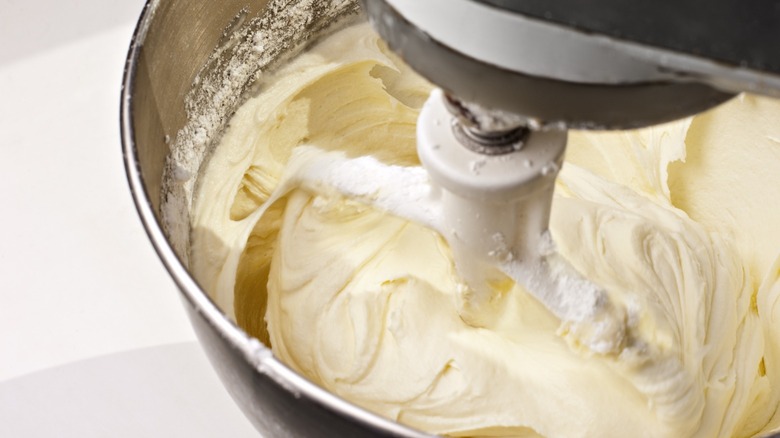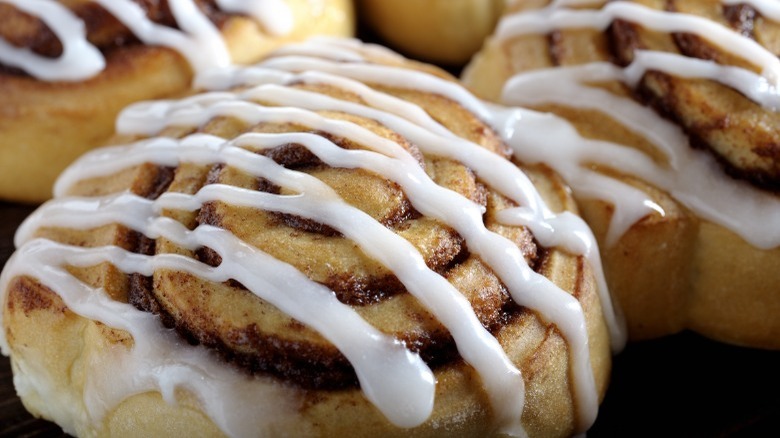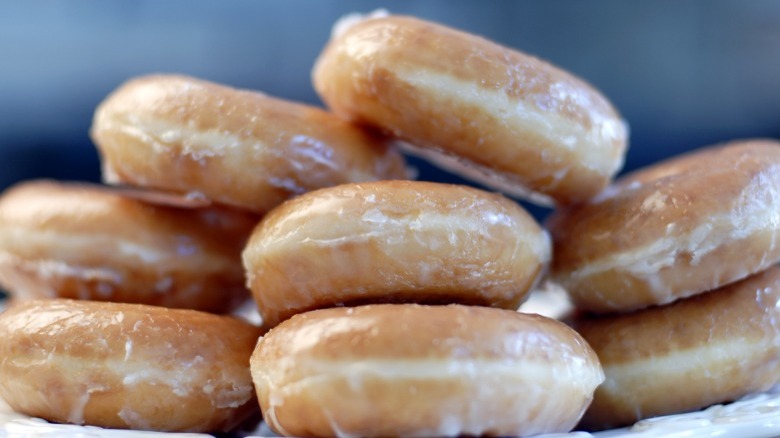Why Frosting And Icing Aren't Interchangeable
When it comes time to decorate those baked goods you've worked tirelessly on, you probably want them to look as polished as possible to reflect all of that hard work. If it's a cake you've just finished, the next logical step is the frosting — or is it icing? While you might have heard these two terms used interchangeably, they're definitely not the same and have very different applications when used for decorating.
Generally, the biggest differentiator between the two sugary pastes is the texture. Frosting is typically thick and has a whipped, light consistency, and there are a number of different categories. In comparison, icing is a lot runnier — you could use a spoon to drizzle it on, for example. Additionally, the two have very different uses. Frosting is most often used on the outside and in between layers of cakes, while icing is used for dripping or very detailed décor work.
Can you swap frosting and icing in a pinch?
Because icing and frosting have different roles when it comes to baking and decorating, the two should not be used interchangeably — even as a last resort. When frosting is used, it may be for decorative purposes, but it could also be to provide structure and balance to baked goods. Most layered cakes have frosting in between each layer, which provides a flavor contrast but also acts as a structural component keeping it all together. You wouldn't want to use icing in the same way, as its more fluid state could prove structurally fatal for the cake.
Icing has its own very specific applications that frosting couldn't be swapped for, either. One of these is intricate detailing, like what's seen on mesmerizing "cookie embroidery." For complex designs like embroidered cookies, royal icing is often used. Its ingredients — confectioner's sugar, a liquid, and either egg whites or meringue powder — allow it to be slightly more stable, and have a nice shiny finish when dried. The consistency of royal icing can be modified based on what you're using it for, but it's typically a lot runnier than frosting. In instances like decorating cookies or drizzling over cinnamon rolls, frosting's texture makes it a bad swap.
Is icing the same thing as glaze?
Technically, glaze is a category of icing, but it too has a unique composition and uses when it comes to baked goods. Both glaze and icing are sugar-based, but glaze is significantly thinner and a lot more transparent than icing. Glaze is made from confectioner's sugar and some kind of liquid, and can be flavored much like its sugary siblings.
You might have commonly seen it poured over scones or dumped over donuts. Mirror glaze is a trendy tactic that —as the name suggests — creates a reflective surface on whatever you're dripping it over. Its makeup is a little more complicated than a traditional glaze, and incorporates gelatin, sweetened condensed milk, and some kind of chocolate.
Glaze isn't relegated to solely baked goods either, another reason why it's distinct from icing. The coating is mostly used to add another layer of flavor to a dish, and is commonly employed when making proteins or even vegetables. Honey glazed ham is a popular dish where the glaze is made from honey, brown sugar, and spices. Beer can also be incorporated into a glaze, too — like in these tamarind and dark beer-glazed wings. In either of these cases, you wouldn't want to swap your glaze out for the much thicker and more sugary icing.



